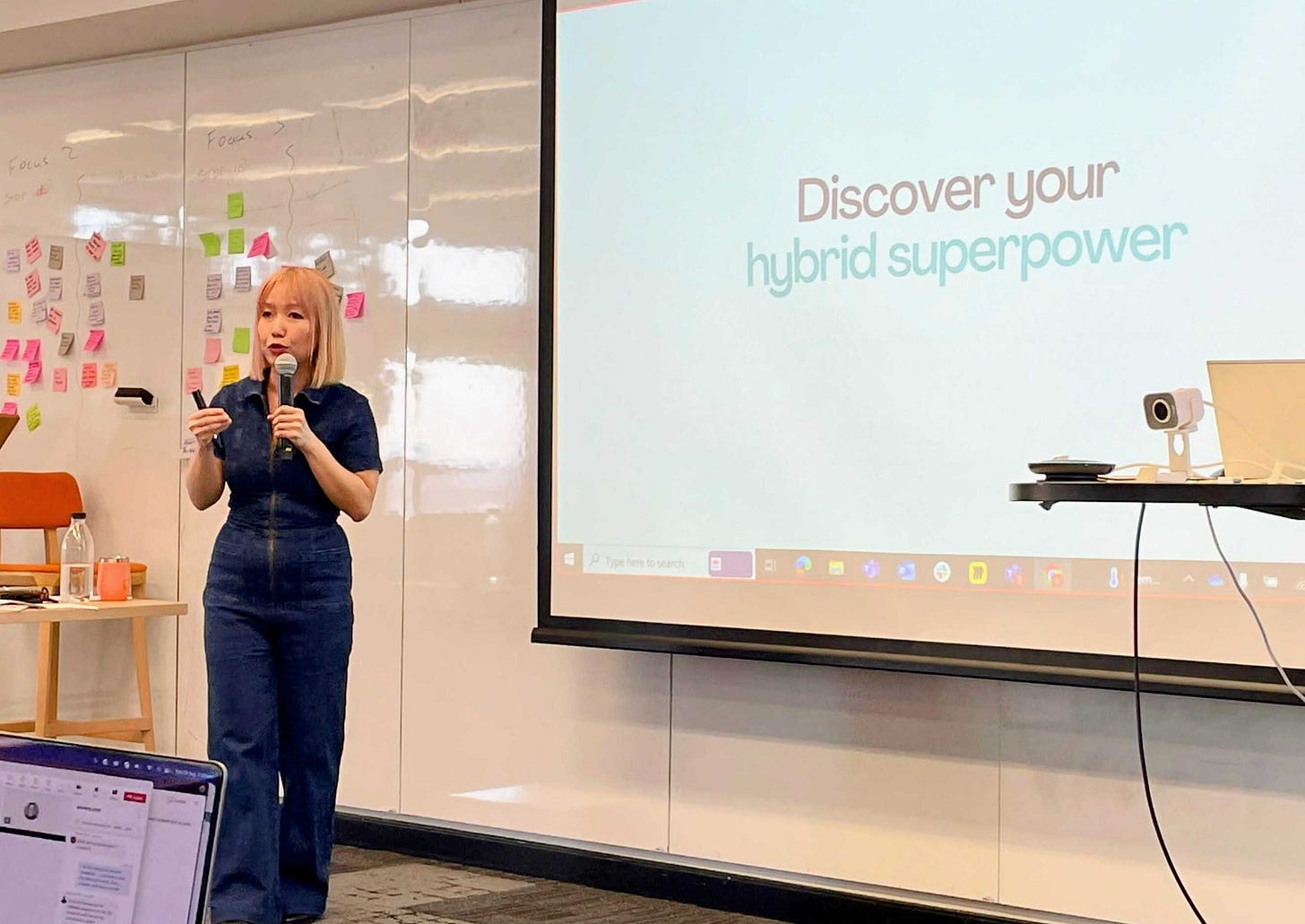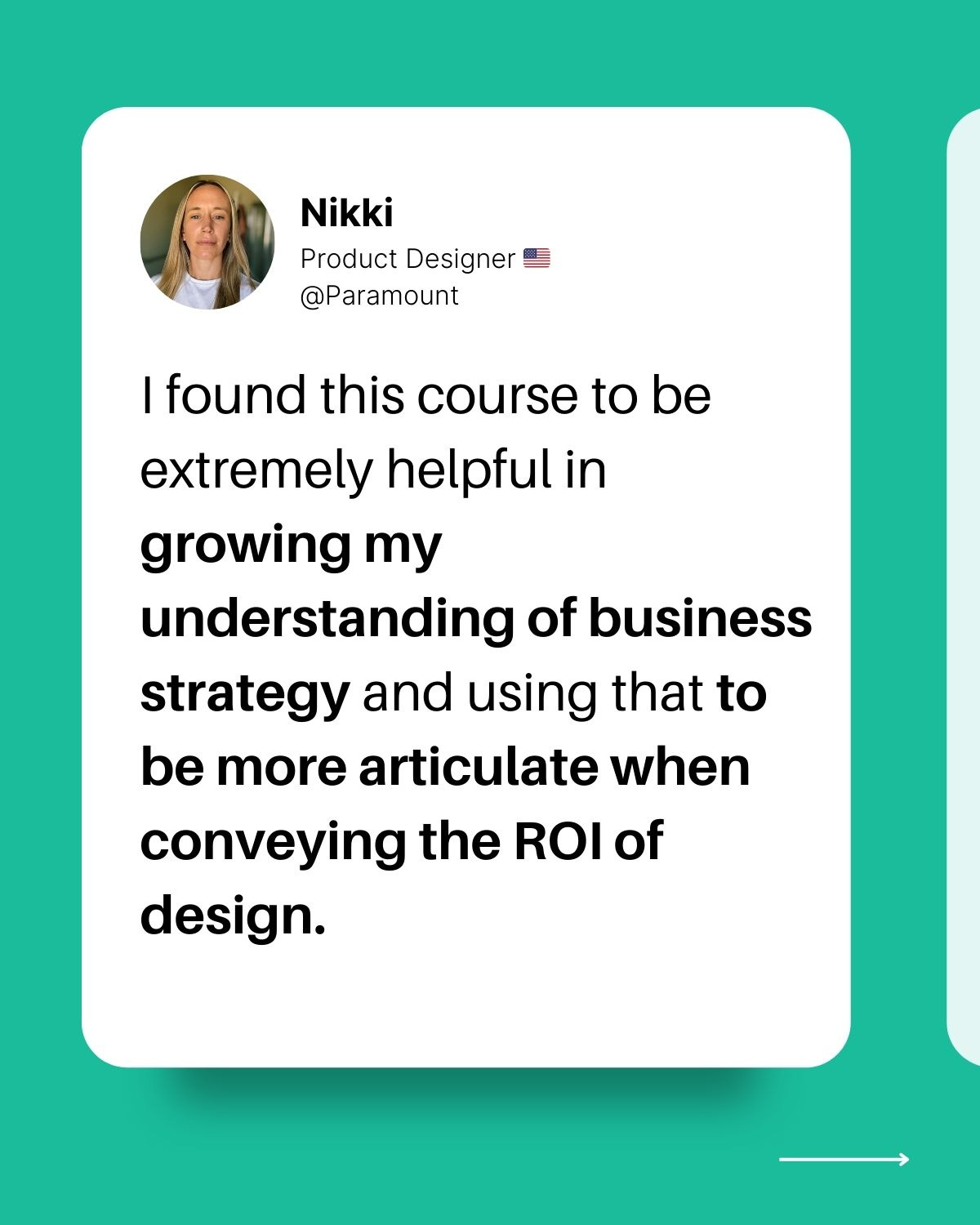High performers vs average performers
Are you a high performer or just getting by? These key differences could redefine your career success.
👋🏽 Hi, it’s Jac. Welcome to my monthly newsletter. Substack is where I create value to help designers become sharper strategic operators. (Once a month)
Personal update:
It’s been a whirlwind few months. Few milestones to celebrate.
Maven course “Strategic Design Accelerator” hit 9.5/10 rating from designers from Doordash, Linkedin and Paramount. 🤩
Public speaking about “Communicating the ROI” on the Atlassian stage - twice! and the feedbacks were incredibly rewarding.🫶🏽
”Thank you for one of the most inspiring and important talks that any of us product designers could attend in our career and moreover, helping to influence design education Jacalin Ding 丁嘉丽 🙌🏽”Facilitated workshops for 100+ people in a room
2024 has been a year of hustle so far. Many of you heard about my 1st business a multi six figure side hustle I decided to sunset due to mis alignment with my goals. This year i’m diving back to build my 2nd business - creating value to help designers become sharper strategic operators. Doing all of these while still on my full time role - that means, I delicate two days a week on my own work. AND I absolutely love it.
My new found moto: I create to share. and I share to learn.
This month, I want to share about my observation after working with over 100+ designers across 3 continents over 17 years in my working career : What do high performers do differently to average performers.
TLDR
They think beyond business, market, economy and world trends.
Manage up and across effectively - ability to provide just enough context
Super ability to create clarity - they communicate to gain trust and able to break down complex concepts into stories understandable by different roles
They gain trust by influence slowly and strategically
They’re highly self aware, actively self reflect.
I hope this piece give you some inspirations to identify your strength and areas to improve. If you have any other thoughts, hit reply to share. I reply to every email (unless it ended up in my junk) 🫶🏽
Read time: 7 mins
For years, I’ve been keeping a side diary to document my observation when working with others. In there, a whole section is dedicated to how a high performer do their work.
And as you know, success always leaves a trait. I have personally adopted some of these action points and can confirm - they can be pivotal for everything you do in life.
1. High Performers Think Big.
High performers are not just designers; they are strategic thinkers with a strong sense of business acumen. They push you to think 10x bigger too, and left you feeling incredibly inspired about what’s possible.
Average Performer: Stays focused on immediate tasks and follows the brief to the letter, without considering how their design impacts the business or fits into broader market trends.
High Performer: Asks questions like, “How does this product fit into the future market landscape?” or “What economic or social trends could impact our user base in the next 5-10 years?” They’re always thinking ahead, anticipating changes, and positioning their work to align with long-term business goals.
Example:
An average performer might design a new app feature based on user feedback from the last six months.
A high performer, on the other hand, would think about how this feature could serve as a foundation for future updates, align with the company’s three-year strategic goals, or even open up new revenue streams.
2. They Manage Up and Across.
High performers excel at managing not just their work but also their relationships with stakeholders.
They understand the importance of context and provide the right amount at the right time.
They don’t procrastinate or strive for perfection at the cost of progress—they are action-oriented and know how to break down complex tasks into manageable steps.
Average Performer: Might wait for perfect conditions to start a project, often getting bogged down in overthinking or aiming for flawless execution, which leads to delays.
High Performer: Takes initiative and delivers work in progress to gather early feedback. They take initiatives, and proactively share updates, providing just enough detail to keep everyone aligned without overwhelming them with unnecessary information.
Example:
When asked to update stakeholders on a project’s status, an average performer might send a long, detailed email outlining every small task completed.
vs
A high performer, however, would provide a concise summary that highlights key progress points and any potential roadblocks, keeping the team focused on what matters most.
3. They Create Clarity
High performers are masters at creating clarity out of complexity. They don’t just provide feedback—they do so strategically, with the intent to influence and build trust.
They understand that storytelling isn’t about self-expression; it’s about connecting with the audience in a way that resonates.
Average Performer: Tends to share stories as a form of personal expression, often without considering how it might be received or how it serves the overall project goals.
High Performer: Structured deliver that is clear, concise, and tied to specific business objectives. They tailor their communication style to who they speak to: from direct reports to senior executives.
Example:
When presenting a new design concept, an average performer might focus heavily on the background, process, reasoning without focus.
A high performer, however, would frame the design in terms of how it impacts the business first and foremost, and then breaks down to reasoning: user engagement, brand alignment, and user stories
4. Emotional Awareness
High performers know that emotional intelligence is just as important as technical skills. They are self-aware, adaptable, mindful, and resilient. They understand their own strengths and weaknesses and are always looking to improve.
Average Performer: Might struggle with feedback, taking it personally rather than seeing it as an opportunity for growth. They may find it challenging to adapt to change or stay calm under pressure.
High Performer: Embraces feedback as a tool for personal and professional development. They adapt quickly to new information or changes in direction and maintain a positive, solution-focused mindset even when facing challenges.
Example:
When receiving critical feedback on a project, an average performer might react defensively and withdraw their effort
A high performer, however, would actively listen, ask clarifying questions, and use the feedback to refine their approach. They even actively self evaluate and reach out to seek feedbacks. Showing their commitment to continuous improvement.
5. Avoiding the Trap of Over-Detailing
Giving the right amount of context helps teams move faster.
Too much context? Your manager can’t tell what’s important. They’ll need to wade through details, trying to sort information into a pile of what’s important vs what to ignore.
Too little context? Your manager has to follow up and pull information out of you that you should have mentioned proactively.
High performers understand the balance between providing enough detail and overwhelming their audience with unnecessary information. They focus on what’s essential and avoid cluttering their communication with excessive details that can distract from the main point.
Average Performer: Overloads presentations and reports with data and details that aren't relevant to the core message, leading to confusion and a loss of focus.
High Performer: Selects details that are most relevant to the audience and the decision at hand. They know that clarity is more important than conciseness and that the right detail at the right time can make all the difference.
Example:
Instead of presenting a timeline with every minor task and date, a high performer would highlight key milestones and dependencies, providing a clear path forward that aligns with business priorities.
High performers are rare!! They become indispensable business partners.
I hope this piece gives you some ideas on how to strengthen your own practice.
As always, I’d love to hear your thoughts—just hit reply to share. I read every response (unless it ends up in my junk folder!).
Oh.. yes before I forget.
👇🏼👇🏼👇🏼👇🏼
TWO FREE online sessions happening in October
I really hope you can join us.
🔗 Becoming a high performing designer
&
🔗 Advocating for Design in Cross-Functional Teams - where I chat with Lead Designer Paulina Galindo from Doordash.
On the side note: Please allow me to share some joy from the last cohort. 👉🏽 Next cohort starts in November.
It feels incredible to be able to help others achieve new heights. Because when that happens, life is never a dull moment.
Until next time,
Jac 🫶🏽









